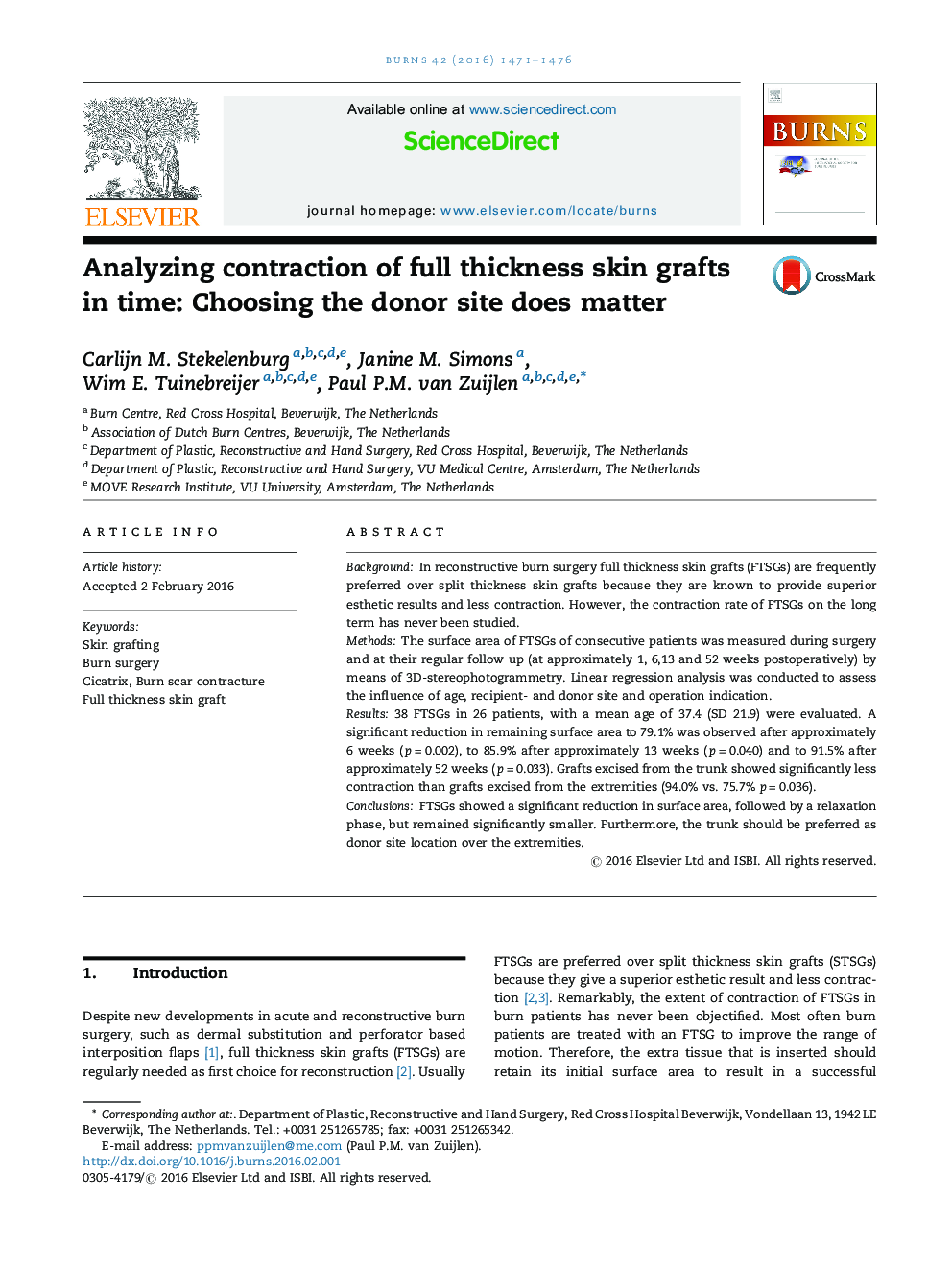| کد مقاله | کد نشریه | سال انتشار | مقاله انگلیسی | نسخه تمام متن |
|---|---|---|---|---|
| 5636242 | 1406665 | 2016 | 6 صفحه PDF | دانلود رایگان |
- Full thickness skin grafts are used for the reconstruction of scar contractures.
- Full thickness skin grafts show a significant long term surface area reduction.
- Full thickness skin grafts harvested from the trunk show less contraction.
BackgroundIn reconstructive burn surgery full thickness skin grafts (FTSGs) are frequently preferred over split thickness skin grafts because they are known to provide superior esthetic results and less contraction. However, the contraction rate of FTSGs on the long term has never been studied.MethodsThe surface area of FTSGs of consecutive patients was measured during surgery and at their regular follow up (at approximately 1, 6,13 and 52 weeks postoperatively) by means of 3D-stereophotogrammetry. Linear regression analysis was conducted to assess the influence of age, recipient- and donor site and operation indication.Results38 FTSGs in 26 patients, with a mean age of 37.4 (SD 21.9) were evaluated. A significant reduction in remaining surface area to 79.1% was observed after approximately 6 weeks (p = 0.002), to 85.9% after approximately 13 weeks (p = 0.040) and to 91.5% after approximately 52 weeks (p = 0.033). Grafts excised from the trunk showed significantly less contraction than grafts excised from the extremities (94.0% vs. 75.7% p = 0.036).ConclusionsFTSGs showed a significant reduction in surface area, followed by a relaxation phase, but remained significantly smaller. Furthermore, the trunk should be preferred as donor site location over the extremities.
Journal: Burns - Volume 42, Issue 7, November 2016, Pages 1471-1476
